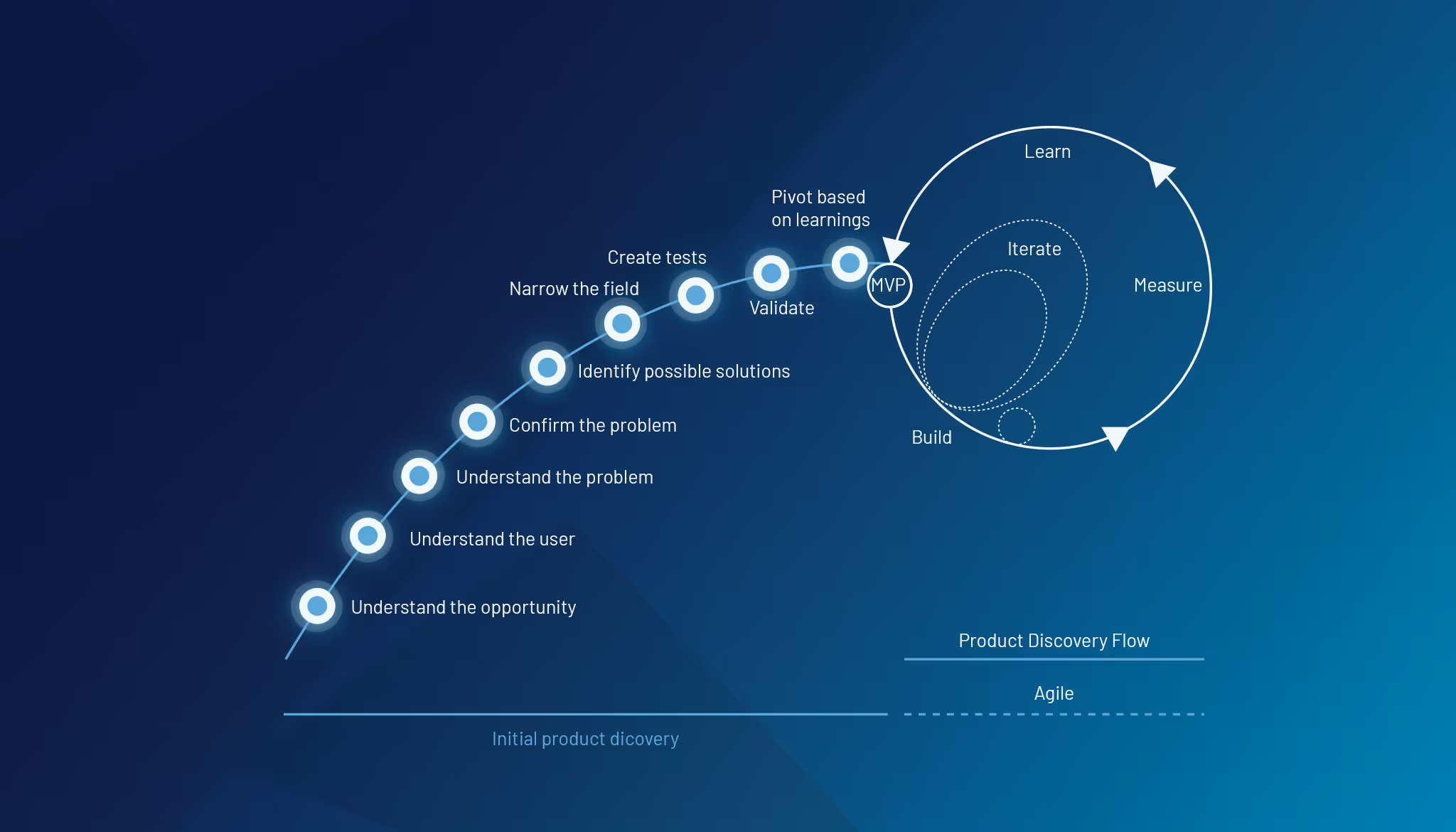
Bringing a software product to market—or taking an existing product to the next level—can be a thrilling adventure filled with opportunities and challenges. Whether you’re launching something new or refining a current offering, there’s a critical question every startup must ask: Are we building the right thing, or improving in the right way?
Success isn’t about gut instincts or chasing the latest trends—it comes from truly understanding the problem you’re solving for your users. That’s where product discovery becomes a game-changer. This process helps startups—both new and established—build or improve products that resonate with users and address real needs.
What is Product Discovery?
Product discovery is an iterative process of validating ideas, deeply understanding user needs, and defining a clear path for development or improvement. It ensures that whether you’re building from scratch or refining an existing product, you’re solving the right problem in the right way.
Why Product Discovery Matters for Startups (New or Established)
- Minimize Risk: Jumping straight into development without validation can lead to building something that users don’t need. For startups about to launch, discovery helps ensure there’s a real demand for your product. For those with existing products, it ensures you’re improving the right features or adding value where it matters most.
- Smarter, Data-Driven Decisions: Discovery isn’t about guessing; it’s about learning from real user feedback. This process equips you with insights that inform your decision-making, allowing you to prioritize the right features and enhancements based on what your users truly need.
- Save Time and Money
By identifying the right features and functionalities upfront, you can streamline development efforts and minimize unnecessary expenses. This focused approach ensures that resources are allocated efficiently, leading to a more cost-effective product launch. - Stay User-Centric as You Grow: The most successful startups don’t just solve problems; they continuously solve problems better than their competitors. Discovery allows you to stay closely connected to your users, understanding their evolving pain points and how your product can continue to meet or exceed their expectations.
Key Steps in the Product Discovery Process
1. Identify the Problem
A common pitfall for startup founders is falling in love with the solution they’ve envisioned rather than the problem they set out to solve. This mindset can blind you to new opportunities for growth or make you resistant to necessary changes. Product discovery shifts your focus back to the problem, allowing you to adapt and pivot as needed.
For startups looking to grow, this is especially crucial—your product must evolve with your users. Falling in love with the problem means staying flexible and constantly evaluating whether you’re still addressing your users’ biggest pain points.
2. Research and Empathy
Dig deeper into the problem through user research. Use qualitative and quantitative methods to gather insights about users’ behaviors, needs, and frustrations. Tools like user interviews, observation, and empathy maps help you understand their context.
Remember, understanding your users is the foundation of effective product discovery.
3. Define Objectives and Success Metrics
Clarify your business objectives and define what success looks like. This can involve setting clear goals for your product and determining how to measure the impact. These metrics will guide the rest of the discovery process and keep you focused on what truly matters.
4. Brainstorm Solutions
Once you understand the problem, gather your team to brainstorm possible solutions. Encourage creative thinking and diverse perspectives to ensure a broad set of ideas. Keep an open mind and explore various approaches, remembering that collaboration can spark innovative ideas.
5. Prioritize and Narrow Down
Out of the many ideas generated, prioritize them based on feasibility, user value, and business impact. This step helps you focus on the most promising solutions to prototype or test, ensuring that your resources are spent wisely.
6. Prototyping and Testing
Develop low-fidelity prototypes or mockups of the most viable solution ideas. Test these prototypes with real users to gather feedback. The goal is to validate the solution early before investing significant resources in development. This step can save you time and money down the line.
7. Iterate Based on Feedback
Use the feedback from testing to refine the solution. Iterate multiple times, improving the product idea with each round of user insights. This helps ensure you’re solving the right problem in the best possible way.
8. Create a Product Roadmap
Once the solution is validated, map out the steps for bringing it to life. This includes defining the key features, timelines, and milestones needed to develop, launch, and continuously improve the product. A clear roadmap will guide your team and keep everyone aligned.
Are you looking to create or grow your product?
At Kaizen Softworks, we understand the journey of building or refining a product can feel overwhelming. That’s why we specialize in guiding startups through the product discovery process.
Let’s connect and talk about how we can help turn your vision into reality.



.png)

.png)









